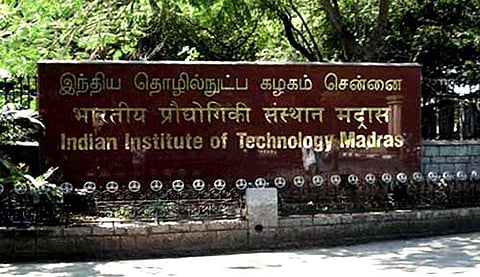

The Indian Institute of Technology (IIT) Madras' ExTeM, or Extraterrestrial Manufacturing, is conducting "out-of-this-world" research — and quite literally so!
It is considering manufacturing products for use both in space and on Earth in space's frigid, zero-gravity, near-vacuum environment
While mainstream understanding of space technology is usually dominated by headline-grabbing satellites and rockets, the research team at ExTeM instead asks, "What will India do once it is actually in space?”
“Our work runs parallel to ISRO’s Space 1.0 research. As ISRO works on Gaganyaan, we’re thinking about what we’ll do when the crew actually reaches space. While ISRO builds our Indian space station by 2040, we’re researching what India will work on in the space station,” said Sathyan Subbiah, Coordinator and Founder of IIT Madras’ ExTeM centre.
Their endeavours are being noticed by India's leading space institute, ISRO (Indian Space Research Organisation), The Print reports.
ExTeM comprises interdisciplinary scientists working on 'Space 2.0 research', which involves developing indigenous technology to manufacture in space, build cities out of celestial material, and repair spaceships without returning to Earth.
“When we think of building on the Moon or Mars, we won’t be able to take everything we need from Earth to build there — it would just be too expensive and unviable,” said Subbiah.
“So what you need to do is improvise based on the material already in space,” he added.
Building the basics
Interestingly, despite their futuristic research, the ExTeM team’s work is surprisingly simple, The Print reports. One of their projects is trying to understand how welding works in zero gravity.
“During the welding process, when metal melts on Earth, there is gravity to detach the droplets and deposit as weld bead,” said Adhithya Sidharth, one of the members of the team.
Sidharth experiments in the ExTeM’s drop tower, with microgravity conditions to resemble outer space.
“So, without gravity, how can we fuse metals together or 3D print something in space?” he asks.
The solution? That’s where his experiment comes in.
In his four-tiered experimental model, Sidharth relies on just 2.5-second-long slots of microgravity to figure out how welding occurs. He discovered that metal droplets melt and separate due to other physical forces such as surface tension and plasma jets in the absence of gravity.
Sidharth’s 38-metre drop tower includes his welding and 3D printing equipment, data centres that store information, electrical sources that provide power, and, most crucially, the camera that captures everything. The unit, which stands one metre tall, is then inserted inside an airtight capsule and dropped from a height of 30 metres.
The Print reports that the 3D printing unit, which can produce a small metal strip while being suspended in the microgravity drop tower, has brought the team closer to manufacturing in zero gravity.
These experiments led to other advancements in the team’s research. For instance, the team is looking at ways to produce “metal foam” in microgravity.
“As you can guess from the name, metal foams are a porous foam-like material made of metal. It is used in lightweight applications, which makes space manufacturing the perfect candidate for it,” Neelabh Menaria, a master’s student doing his thesis with the centre and is working on the metal foam project told The Print.
Menaria's task is to determine how outer space affects the foaming ability of metals.
Through his experiments, he found that he could create multiple rolls of metal foam at the same time, with differing sizes.
“Metal foams aren’t restricted to being used in spaceships and rockets; they can also be used to build in space. As a manufacturing material, it can help in building human settlements in space, and it can even protect against micrometeorites,” Menaria told The Print.
While Menaria works on developing metal foams for space construction, a professor at the centre is working on another critical part of construction: concrete.
Without water in space, the ability to create concrete, a critical building element, is limited. In this scenario, the only easily available substance is the soil or regolith found on the Moon and Mars.
An experiment by Professor Piyush Chaunsali from the Department of Civil Engineering at IIT Madras involved mixing sulphur with Martian regolith to create 'water-less concrete' in space.
In the lack of actual regolith, the centre made use of a commercially available Martian soil simulant.
The centre is also working on another space manufacturing project that involves optical fibres, The Print reports.
These are fibres approximately the size of a strand of hair, but their applications vary from communication to defence, medicine, and even space. They are created in space using ZBLAN, an alloy of zirconium, barium, lanthanum, sodium, and aluminium fluorides.
Rehashed from "An IIT Madras team is working on manufacturing in space. It’s planning 20 yrs ahead" by Akanksha Mishra for The Print
